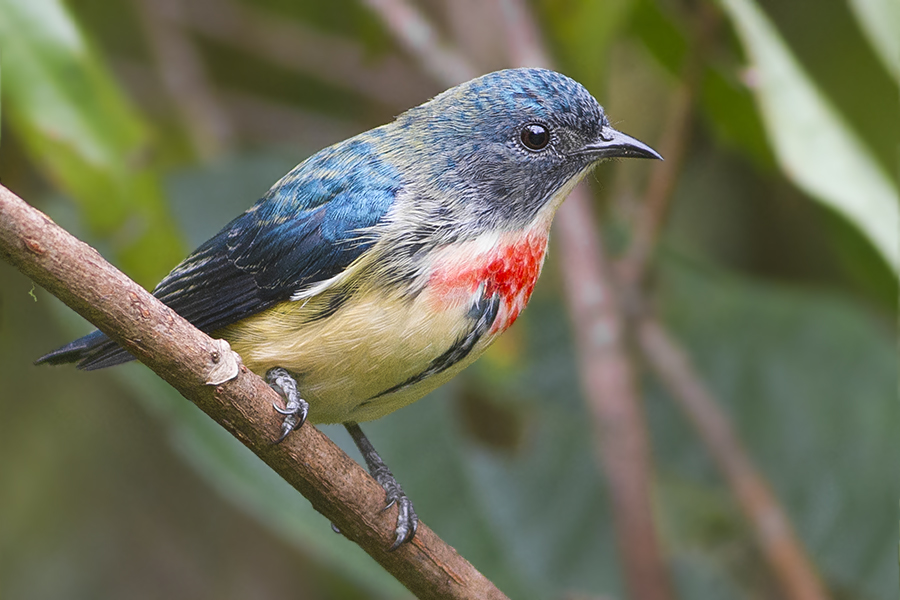On International Tiger Day this year, India announced the increase in number of tigers in the country to 2,967. This does not mean however that the threats to tiger population which existed earlier do not persist – loss of habitat, poaching and a decline in prey; continue to pose problems. In addition to these, a virus, namely the Canine Distemper Virus (CDV) which can be transmitted from CDV-infected dogs living in and around wildlife sanctuaries has started to raise concern among wildlife biologists.
Canine distemper is a contagious and serious disease caused by a virus that attacks the respiratory, gastrointestinal and nervous systems of puppies and dogs.
Also Read: 3 Year old Tiger Bitter by Rabid Dog
A study by a team of wildlife biologists and veterinarians notes that 86% of the tested dogs around Ranthambhore National Park in Rajasthan carried CDV antibodies in their bloodstream.
The implication of this is that the dogs are either currently infected or have been infected sometime in their life. This suggests that there is an increased risk of disease transfer from the dogs to tigers and leopards that live in the park.
In one of the biggest wildlife calamity India faced last year, over 20 wild lions from the Gir forest succumbed to the same viral infection. The outbreak was contained thanks to rapid response by the government and international team of experts. But now it seems that tigers are equally threatened by the infection.
Also Read: 23 Lions Now Dead in Gir because of Canince distemper Virus
Consequentially, a guideline has been prepared by the National Tiger Conservation Authority (NTCA) to prevent the transmission of the disease to wild animals.

The guideline says that all the dogs (domesticated and free-ranging) in the area around national parks should be vaccinated. Further, studies must be undertaken to get more data on the prevalence of CDV from all the places where it is reported in wild carnivores.
“The main aim should be to vaccinate the free-ranging and domestic dogs in the area around national parks. A lot of NGOs have started animal birth control programmes. They need more support from the government,” says Dr. Jimmy Borah, Consultant, Species Conservation and Law Enforcement, Panthera, and the corresponding author of the paper.
“The disease needs to be recognised and more targeted studies need to be initiated to collect baseline data on CDV from wherever they are reported from in wild carnivores. Understanding the role of domestic animals as contributors to a local CDV reservoir is imperative precursor in considering control measures.”
The study was done from July to August 2015 when the team visited villages (in a 4 km radius) around the Ranthambhore National Park and blood samples from over 100 dogs was collected. The results showed that 86% of the studied dogs had CDV antibodies in their blood. These dogs wander into the forest along with the humans, and there have been cases where leopard have hunted these dogs. As in many other diseases, when the virus transmits from one species to another, the severity is worse.
“Studies from Russia and Africa have shown that small, isolated wildlife populations are more susceptible and when the virus transmits from one species to another the disease manifestation is worse,” adds Dr. Borah.
Prevention – better means of tackling the virus
“The easy way out is prevention. Managing any disease in a wildlife population is extremely difficult. Most dogs are free ranging and not owned by any particular person in the village. The government should take the initiative to vaccinate the dogs around wildlife sanctuaries in the country. This would be a good time to vaccinate against rabies as well. It is an investment that requires time and effort but increasing herd immunity will reduce chances of disease spillover to wildlife,” says Nadisha Sidhu, first author of the work.
Ms. Sidhu says there were only a few CDV suspected cases in India when she started her work in 2015, and so was considered not important. But with the CDV confirmed deaths of lions in Gir, more attention has been drawn to the disease. She hopes more studies are conducted to get countywide data on the disease prevalence so that necessary prevention guidelines can be laid out.
It is now upto the authorities to take prompt and preventive action lest we should lose tigers too like the lions of Gir to Canine distemper virus.









